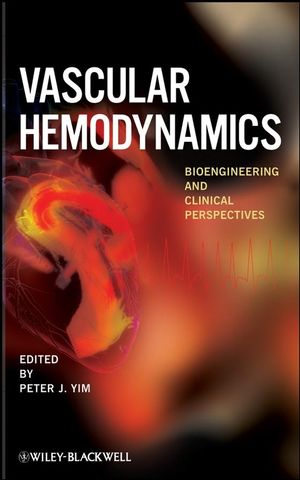Vascular Hemodynamics: Bioengineering and Clinical PerspectivesISBN: 978-0-470-08947-7
Hardcover
368 pages
October 2008, Wiley-Blackwell
 This is a Print-on-Demand title. It will be printed specifically to fill your order. Please allow an additional 15-20 days delivery time. The book is not returnable.
|
||||||
The only complete work on vascular hemodynamics
Recently, vascular hemodynamics has undergone major advances, resulting from increasingly sophisticated imaging, computational, and clinical research methodologies. The effects of these advances are likely to be profound at both the scientific and clinical levels. Now, Vascular Hemodynamics provides a self-contained treatment of this rapidly advancing topic as it relates to vascular disease and related pathologies in the human body.
Utilizing a multidisciplinary approach encompassing engineering, vascular biology, vascular imaging, and clinical practice, the book provides a survey of the basic science and clinical research in hemodynamics of the vasculature. The topics presented involve sophisticated modeling, imaging, and measurement techniques. The text emphasizes both the technical and clinical aspects of the field.
Additionally, Vascular Hemodynamics:
*
Includes a wide variety of models of vascular pathology, including physical models, finite-element models, linear-system models, transmission-line models, and dye-dilution models
*
Discusses diverse pathologies of the large vessels, the microvasculature, and the systematic vasculature
*
Brings together a range of imaging modalities related to hemodynamics
*
Includes both introductory-level and research-oriented material on each topic
Vascular Hemodynamics is the only single-text treatment of this important topic, making it a vital reference for researchers and students of bioengineering, radiology, vascular surgery, neurology, nephrology, cardiology, and oncology.
Recently, vascular hemodynamics has undergone major advances, resulting from increasingly sophisticated imaging, computational, and clinical research methodologies. The effects of these advances are likely to be profound at both the scientific and clinical levels. Now, Vascular Hemodynamics provides a self-contained treatment of this rapidly advancing topic as it relates to vascular disease and related pathologies in the human body.
Utilizing a multidisciplinary approach encompassing engineering, vascular biology, vascular imaging, and clinical practice, the book provides a survey of the basic science and clinical research in hemodynamics of the vasculature. The topics presented involve sophisticated modeling, imaging, and measurement techniques. The text emphasizes both the technical and clinical aspects of the field.
Additionally, Vascular Hemodynamics:
*
Includes a wide variety of models of vascular pathology, including physical models, finite-element models, linear-system models, transmission-line models, and dye-dilution models
*
Discusses diverse pathologies of the large vessels, the microvasculature, and the systematic vasculature
*
Brings together a range of imaging modalities related to hemodynamics
*
Includes both introductory-level and research-oriented material on each topic
Vascular Hemodynamics is the only single-text treatment of this important topic, making it a vital reference for researchers and students of bioengineering, radiology, vascular surgery, neurology, nephrology, cardiology, and oncology.



